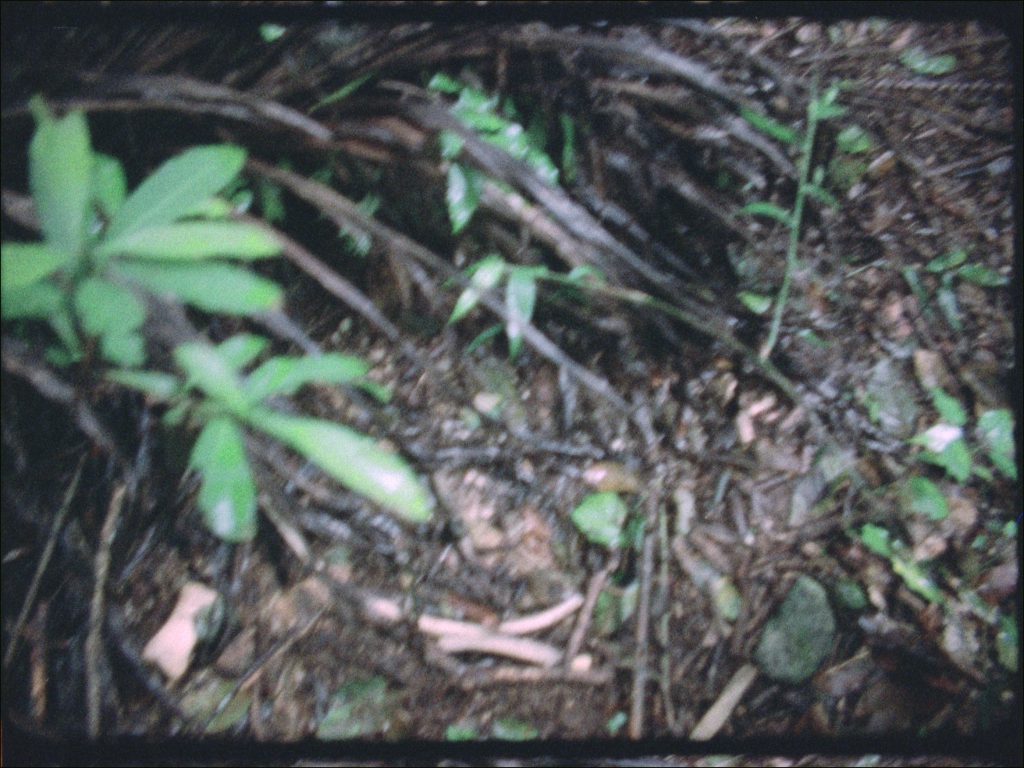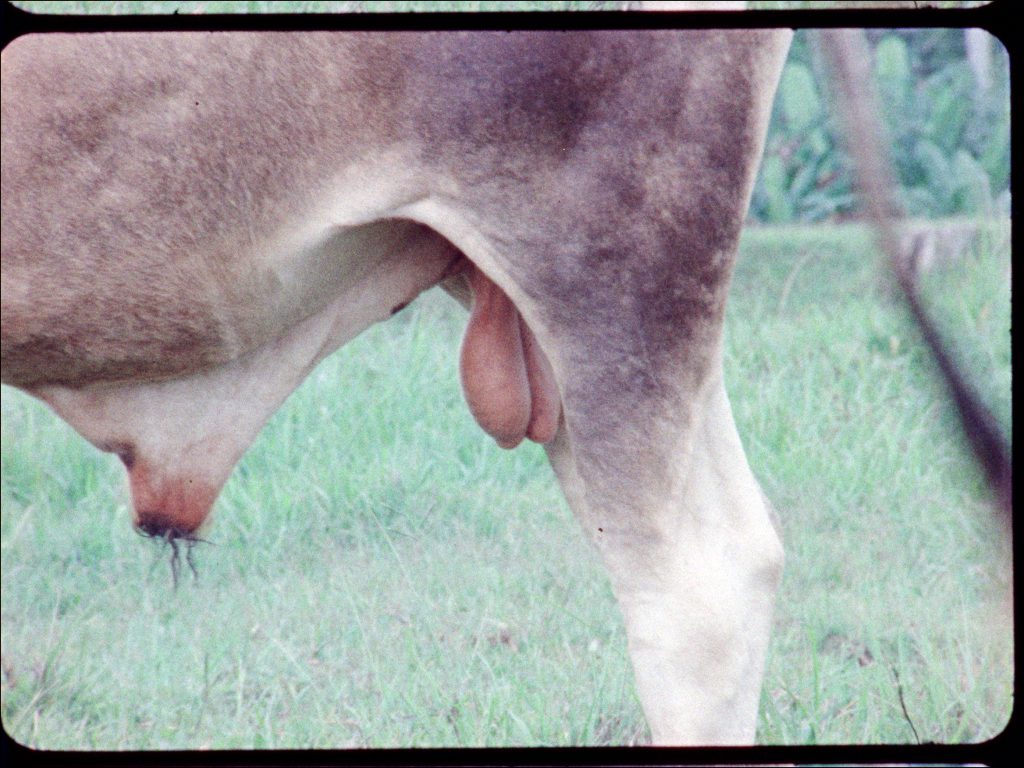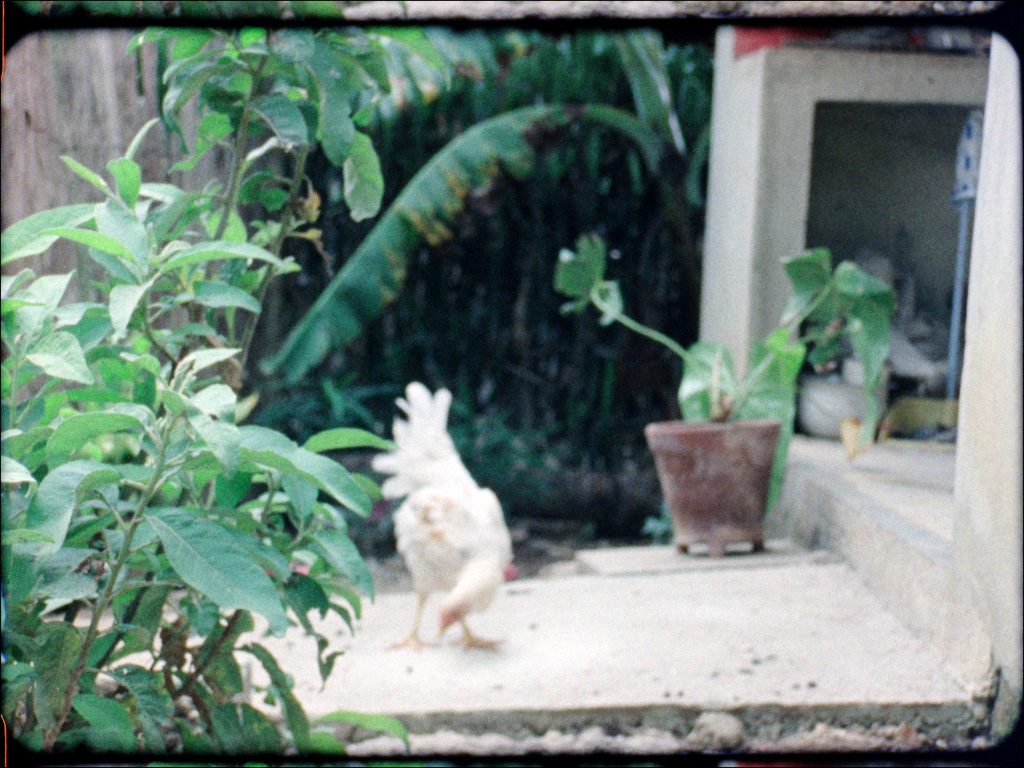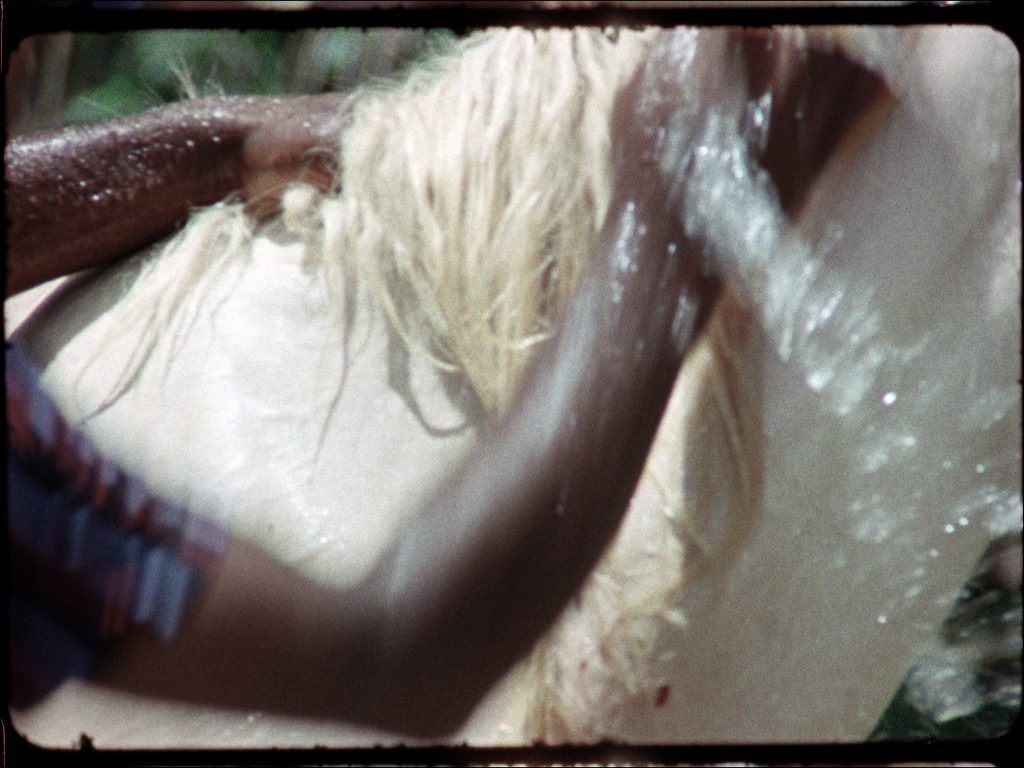prendas – ngangas – enquisos – machines {each part welcomes the other without saying}
16mm, color/sound, 25 min. 58 sec., Cuba 2014












How we can connect the more-than-human with the historical, specifically the postcolonial space without deepening violations already inflicted on both humans and nonhumans? The ‘wilderness’ of Yateras in Cuba is informed by a long and layered history. What at first sight seemed to be a pristine ecosystem turns out to be created by human and nonhuman practices interacting and circulating matter. The film gathers affects and modes of activity of plants and animals whose ancestors were moved to the New World and had to colonize the new land [with the humans] as a team. On the mountainsides I found gardens cultivated in the manner used by Native Amerindians. The mango tree and bamboo that grows in the primeval looking forests originally migrated from India and China to Cuba. The electrified Hershey train, once a frontiers of capitalism and built by the Hershey Chocolate Corporation of Pennsylvania is today subjected to a very different logic that corresponds to an understanding of reality not as a undivided whole, but made of fragmentary moments and discontinuities. Connecting the more-than-human with the postcolonial space might make it possible to understand how plants, matter and animals transverse history, by being both, historically situated, evoking testimonies of past events, while recognising their specificities, and at the same time continuously overgrowing, surpassing and escaping historical formatting with their unique mode of constantly evolving, changing and creating something new. The Spanish brought sheep, cows, and horses along. The first horses arrived in 1540 in the Americas. In present-day Cuba animals such as cows, horses, goats, pigs, sheep and chickens provide food and labor, and often move around freely, almost without any confinement. Much like extended family members (comparable to pets in the western hemisphere) some animals share close relations with humans. Some can pass into an intermediate state between domesticated and wild, others change through their engagement with the environment and fully reverse their domestication to become something else entirely.
Todd Ramón Ochoa
prendas – ngangas – enquisos – machines {each part welcomes the other without saying}
Berlin: Archive Books, 2015
A membrane trembles where the everyday and the immanent touch, separating and at once connecting them. It permits the senseless routine of everyday life and the imperceptible stillness of immanent life to give way to one another, to communicate. The porous membrane is an active conduit between acknowledged (everyday) and unacknowledged (immanent) forces in human lives. Passing through it is indeterminate and like so many anomalous sensations little attention is devoted to it. We avoid lingering in or near this membrane because it cannot be readily processed to conclusion through language and reasoning, growing and receding as it does at the limits of sensation. [continue reading]
Erin Manning
In the Rhythm of Another Relation
Berlin: Archive Books, 2015
The sound of water, a slow slow moving shot. Light reflecting through the trees, dappled, the sky grey. Closer, now, the sound of walking. Now another quality of light, a shifting of the dapple. A banyan tree, bones on the ground, rusty metal, the camera moving in circles, dizzying.
Isidra has left her front door cracked. Down the hall the closet where she keeps her prendas-ngangas-enquisos is open. Beyond this, Isidra lies prone on the cold tile of her dining room. Her forehead is pinned to the ground in front of an urn. This urn is Madre de Agua (“Water Mother” or “Mother Water”). A candle burns inches from Isidra’s head covering. The candle is indispensible as a signal light and a fuse in the swirling, combustible flows of Kalunga and one would be foolish to visit with an agglomeration of the dead like “Ma’re Agua” without one. Without looking up Isidra has pulled me to her side and we are inches from Ma’re Agua. She is singing in a low tone, a song that by its melody and cadence might be from the countryside where she grew up. But she is muffling her voice, catching her words in her mouth, and I can’t make them out (Ochoa 2010: 391).
Dead carcasses. The back legs of an animal, a horse. The camera turning, clockwise. Vertigo. Leaves in the wind. [continue reading]
Jussi Parikka
Media Ecologies
Berlin: Archive Books, 2015
In one of his signature moments on screen, Werner Herzog narrates the cruelty of nature. In a clip that can be easily found online, Herzog releases while filming Fitzcarraldo (1982) his dark ecological meditations about the environment; the plants, animals, and life all just expressing an echo of (sort of) Darwinian natural selection styled meditations about survival through fornication and death and also what Herzog calls the “misery of existence.” It is an odd meditation, which at first sight seems powerful due to the style and voice of Herzog. Yet, it turns out to be extremely problematic as soon as one considers more carefully what is actually being said. Herzog claims that nature is “prehistoric,” still in its formation, like looking for a historical period; however, nature is in fact already set within a historical narrative that defines it as prehistoric. Any attempt to speak of nature is already inside a specific discourse that sets it in relation to humans and culture. [continue reading]
Tobias Hering
Performing Things
Berlin: Archive Books, 2015
Over the past few years, arguably starting with permeable super real in 2010, Elke Marhöfer’s films have taken the course of a continuing research journey. What in the beginning seemed to be more of an intuitive refusal to comply with ideological constraints of the cinema apparatus, by now has grown into a deliberate experiment with and within Elke Marhöfer’s artistic practice and her academic investigations. At the core of this project lies the desire to abandon or transcend the anthropocentric predilections that are not only institutionalized by anthropology but also dominate the theoretical and practical terminology of film. [continue reading]
Thanks to Vladimir Alba Peraza, Zarabanda 7 Rayo, Pablo Pachenco, Santiago Villafuerte, Marion Naito, Gloria Rolando, Rene Ramos La Rosa, Gabino La Rosa Corzo, Danay Gil Martinez, Elfi, Diana, Irai, and Alvi.
Additional support by the Instituto Cubano de Arte e Industria Cinematográficos, Havana, and the University of Gothenburg, Akademin Valand
For public or institutional screenings, please contact Arsenal Distribution Berlin.

















